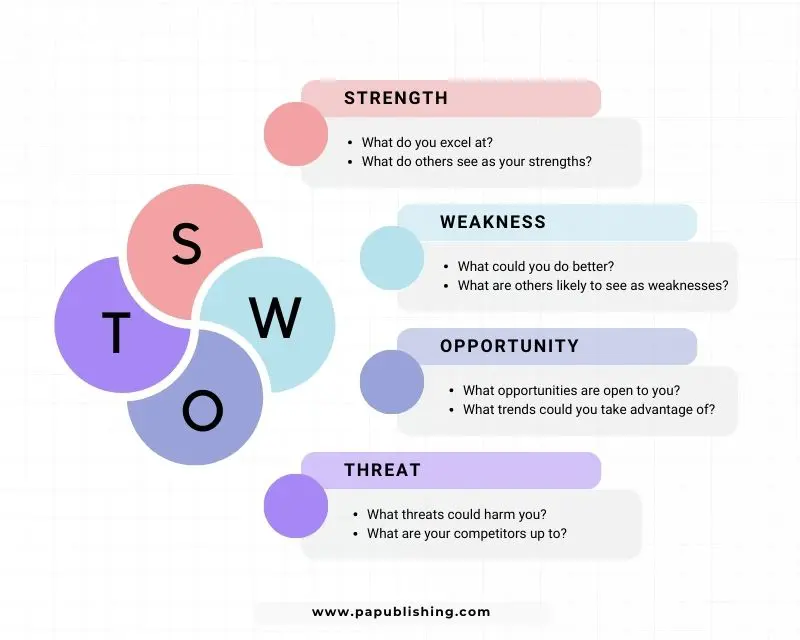How to Do a SWOT Analysis For Small Business | Examples
Whether you’re a budding or seasoned small business owner, a SWOT analysis can be a highly effective tool to help you analyze your business’s position in the market. Doing a SWOT analysis for small businesses gives owners the information needed to further grow the business through better resource allocation and marketing. You’ll also be able to identify and mitigate threats.
In this article, we’ll guide you through each step of conducting a SWOT analysis for small businesses with real-world examples so you get the most effective results.
What Is A SWOT Analysis?
A SWOT analysis for small businesses is a strategic tool to help you identify your business’s internal strengths and weaknesses, along with the potential opportunities you can capitalize on. Other than that, you’ll also be able to recognize any potential threats that could affect the performance of your business or compromise its position in the market.
A small business should at least grow between 10% to 25% each year. After conducting a SWOT analysis, you’ll know exactly what strategies you need to adopt to achieve that kind of growth.
SWOT Analysis for Small Business
Now let’s discuss the steps for conducting a SWOT analysis for small businesses. To help you understand better, we’ll be using the small business SWOT analysis example of a bakery.
Identify Strengths
First things first, you’ll need to identify the strengths of your small business, which are basically its positive aspects that give you an advantage over your competitors. These positive aspects could be your skills, assets, resources, or a loyal customer base. By understanding your strengths, you can build on them to further solidify the standing of your business.
For example, if you have a bakery, some strengths can be having talented bakers and being located in a busy location attracting a lot of customers. If your bakery is known for its wide range of menu options, you can work on further expanding the menu or taking steps to increase the food quality.
Identify Weaknesses
To identify the weaknesses of your business, you’ll have to analyze its areas that are failing to perform as they should. Look at the potential challenges you have to face, like resource or financial limitations. By recognizing these weaknesses, you can develop plans to address them to improve the business.
For example, if you have a bakery, possible weaknesses can be having a limited range of products, budget constraints for marketing, or no seating plan. All these could deter customers from coming to your bakery.
Explore Opportunities
The first two steps were the internal analysis of your small business. This step of conducting a SWOT analysis of a company involves identifying the external opportunities you can take advantage of to take your business to new heights.
Try researching untapped markets, emerging trends, and unmet customer needs. Expanding marketing with digital platforms, partnerships, and networking events are common opportunities that are found highly effective for small businesses growth.
For example, a bakery can attract customers with special seasonal-themed products and offer delivery services. This will increase the business’s customer base and bring in more income.
Identify Threats
The next step of a SWOT analysis for small businesses is to identify potential external threats that could be slowing down your business’s growth. This includes fierce competition, changing market trends, or economic fluctuations. By recognizing these threats, you can take steps to overcome them and do damage control before it’s too late for your business.
Threats to a bakery would include increasing competition, with newer cafes and bakeries opening nearby. Changing dietary trends, like people opting for healthier food, can also deter them from bakeries. To overcome these challenges, you could work on adding more healthier options to the menu and adding new services that the newer bakeries don’t offer.
Bottom Line
Doing a SWOT analysis for small businesses can help them achieve incredible growth in a short amount of time. Knowing the strengths and weaknesses of your business can help you modify your marketing strategies while identifying new opportunities can help your business stay relevant to current trends.
The business will also be protected from external factors like increasing competition and poor economic situation. So basically, doing a SWOT analysis for small businesses can be your key to success.






